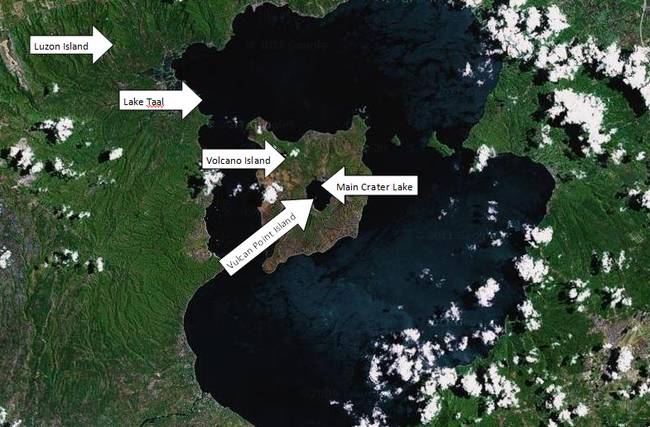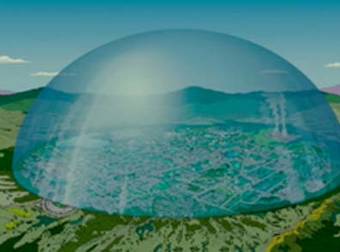Lots of people dream of taking a long vacation on an island… but not all islands were created equal. They aren’t all white sands and clear water. In fact, some can be beautiful while others can be downright creep.y
1.) Isola la Gaiola, Naples, Italy
Located off the coast of Naples, this picturesque little island is actually two mini islands connected by a bridge. (How cute is that?) It’s adorable qualities don’t matter, though, because l’Isola la Gaiola remains uninhabited and haunted, according to rumors. Many former residents claimed ownership over the years, with more than a few of them turning up dead or having extremely bad luck with incidents dating back to the 1920s. The first owner was found dead and his body wrapped in a rug. Another committed suicide and one suffered a fatal heart attack. Other owners faced economic ruin, prison, and the suicide and kidnapping of loved ones.
2.) Palmyra Atoll
An atoll is an island-like structure formed by coral reefs growing on the rim of a sunken volcano. This ring-shaped atoll is home to many kinds of wildlife and has a thriving, vibrant coral reef full of life. There’s only one species missing from this beautiful island paradise: humans. That’s because Palmyra, located in the North Pacific between Hawaii and American Samoa, has a reputation for curses. Legends of creepy happenings date back to 1798, and people report feeling “unwelcome” on the island.
In 1974, there was a double homicide on the island, when a vacationing couple in an expensive yacht and an ex-con and his girlfriend camped on Palmyra at the same time. The latter couple returned to Hawaii with the yacht, and it wasn’t until six years later that the bones of one of the yachting people were found. The other body was never recovered.
3.) Poveglia, Venice, Italy
Located between Venice and Lido, this island is reputedly one of the most haunted places on the planet. In the late 18th century, the island became a checkpoint for all goods coming into Venice. When several cases of plague were discovered, it became a quarantine location, or lazaretto, for the ill.
It was also a permanent quarantine location for the terminally ill in the 19th century, sparking legends of dying Venetians populating the island in life and haunting it after death. It’s estimated that as many as 150,000 people died here.
Then, in the 1920s, Poveglia was used as an asylum. Legend has it than a doctor began experimenting on patients there using crude proto-lobotomies. He was also supposedly tormented by the spirits of the unfortunate patients his experiments killed, and hurled himself from the lighthouse. In 2014, the Italian government decided to auction off a 99-year lease of the island in the hopes that someone will convert it into a luxury hotel. A hotel on a haunted island, the grounds of which include mass burials. That doesn’t sound like a horror movie premise at all.
4.) La Isla de las Muñecas, Xochimico, Mexico
This island, located near Mexico City in the canals, is also known as “The Island of the Dolls.” Why? Because it’s decorated with hundreds of dolls hanging from the trees. Legend has it that the island is a shrine to a little girl who drowned in the canal near the island. In the 1950s, a street preacher from Mexico City left his family to move to the island; it’s said that he hung up all the dolls as either a shrine to the girl, to ward off evil spirits, or possibly both. The preacher, Don Julian, lived on the island for 50 years before drowning himself in the same area where the girl supposedly drowned. Today, his son maintains the island and happily welcomes tourists who come for a look.
5.) Ilha de Quiemada Grande, São Paulo, Brazil
This island lies 90 miles off the coast of São Paulo. Locals call it “Snake Island” because it’s home to the Golden Lancehead Viper, one of the most venomous snakes in the world. It’s estimated that there are as many as 5,000 of them living here as the only species of snake on the island. The snakes are so venomous (with their venom said to “melt human flesh”) that the Brazilian Navy strictly forbids anyone but research scientists from going there.
6.) Christmas Island, Australia
More than half of this Australian territory in the Indian Ocean is a protected national park. Its humid forest canopy is home to the Christmas Island red crab. There are close to 120 million of them on the island, and they spend most of the year happily clicking and pinching away in the forest. Every rainy season, they all migrate out to the ocean to spawn. The journey from forest to sea is five miles, which is really far when you’re a crab; the trip takes them about a month. During this time, they face death from dehydration and attacks by “yellow crazy ants.” That’s actually what they’re called, and they attack the crabs in swarms. Still, the crabs push on, marching in huge numbers on their little crab legs until they reach the shore, mate, lay eggs, and then walk all the way back. The babies then follow.
7.) Sable Island, Nova Scotia, Canada
This island is now a national park, but used to be a temporary home for pirates, convicts, and shipwrecked sailors in the past. Shipwrecked sailors were likely the bulk of the population. Due to its location, this long, crescent-shaped island was the site of about 475 shipwrecks. When the ships wrecked, human sailors were not the only survivors; horses survived as well. The horses, either abandoned by sailors or swam ashore, managed to thrive on the island, living on sea grass and rainwater. Today, there are about 400 wild horses living pretty much undisturbed on the island, along with a Parks station and a scientific research facility.
8.) Tashirojima Island, Miyagi Prefecture, Japan
Cats were first introduced here in the mid-18th to mid-19th century to control the mouse population plaguing the island’s silkworm farms. The silkworm industry later moved, and most of its inhabitants followed, leaving the cats behind. Today, there are about 100 human residents, most over the age of 60, but the cat population skyrocketed. Tashirojima’s main industry is fishing, which the cats have to be thrilled about. The fishermen came to believe the cats were lucky, so they let them stay and multiply. There’s even a shrine built to the cats. Naturally, everyone wants to come to Cat Island, as it’s known, and tourists are invited to stay for the night in cat-shaped cabins from April to November. No dogs allowed.
9.) ÅŒkunoshima Island, Japan
If you thought Cat Island was adorable, you need to see Rabbit Island, or Usaga Jima. The rabbits, though feral, are quite friendly, as seen in the video. Unfortunately, their past is pretty dark. This island was the center of Japan’s chemical weapons production before and during WWII, with more than 6,000 tons of poison gas produced here in secret. The rabbits were brought in as test subjects for the gas’ effectiveness. Another, happier rumor has it that today’s rabbit population descends from rabbits brought by schoolchildren in the 70s. Whatever the reason, the bunnies are happily hopping around today, pestering tourists for food (and of course they can’t say no). There are also golf courses, camp grounds, and beaches.
10.) Vulcan Point, Luzon, Philippines
This tiny island is known as the “Inception” island due to its geographical oddness. The Philippines are made up of several islands. One of these is the island of Luzon. On Luzon, there is a lake, Lake Taal. Inside the lake is the tip of the Taal Volcano, which is one of the most active volcanoes in the Pacific’s Ring of Fire. The peak of the volcano features a crater, where the lava would come from. This feature is known as a caldera. The caldera has, over time, filled with rainwater to form a smaller crater lake. Inside that lake is the tiny island of Vulcan Point, which was created by the volcano. Vulcan point is an island in a lake in an island in a lake on an island in the Pacific.
(Via Oddee)
These islands are pretty out there. Not just in a location sense, but in their history. This kind of puts a damper on my whole idea of island vacations.
 share
share



